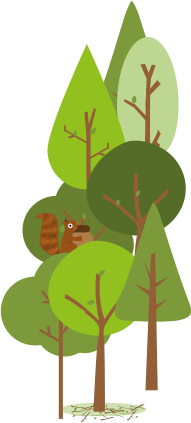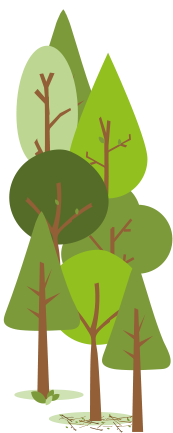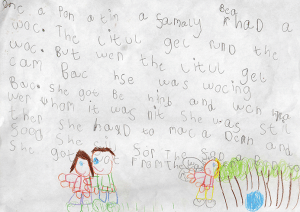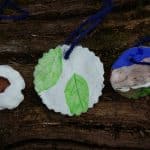

Connecting with Nature #3 Muddy March
22nd March 2016

I regularly work in an urban school where most of the children don’t play outdoors very often. Many seem to have picked up the message that they must never get dirty and always keep their clothes clean. Our forest school area has become very muddy this winter so this term I have tried to help them overcome their resistance and learn to love the the mud.
Boggarts: I tell them the story about the boggarts, the mischievous creatures that used to inhabit the woods, but which since being pushed aside by the activities of man, have taken to playing tricks on unsuspecting passers by. If you’ve ever been in a wood and had something fall on your head, or been walking along and been tripped by an invisible tree root, that’s a boggart!
To show these impish creatures that we mean no harm and seek their help in protecting the woodland, we can make their image on the trees or as puppets on sticks. Using mud or clay and natural materials such as grasses, cherry stones 
On a first session to help them overcome their fear of touching the mud I offered them one rubber glove each; they could chose to only handle the mud with that hand or work with a friend to sculpt the form. Most inadvertently touched the mud with their bare hand and found they lived to tell the tale!
Clay: On some sites clay is freely available to be dug up from the ground, but where it’s not, we take some in a tub. A great exercise to break the ice with clay and encourage everyone to get creative is to stand in a circle and give each person a piece. With hands kept behind their backs, ask everyone to sculpt a familiar animal – no peeping. Save the big reveal until the end when one by one the group presents their wonky and often hilarious looking creations.




Should we really be encouraging children to get their dirty? In her book Why Dirt is Good for You, Dr Mary Ruebush argues that our obsession with cleanliness is making us poorly and exposing ourselves to some dirt and germs builds up the immune system brilliantly, protecting against allergies and asthma in adulthood. Researchers at the University of Bristol found that exposure to mud is also good for the brain. They found that a soil microbe called microbacterium vaccae causes the release of serotonin which improves mood and improves brain function. They are looking at how this can be harnessed in the treatment of depression.
Messing about in mud does seem to be a natural instinct for children and make them happy. Just remind them to wash their hands afterwards!


